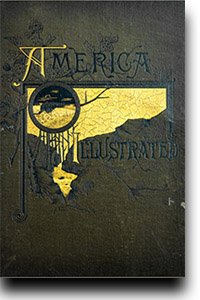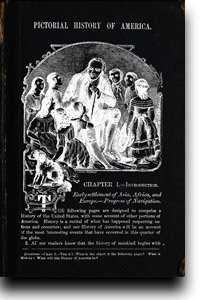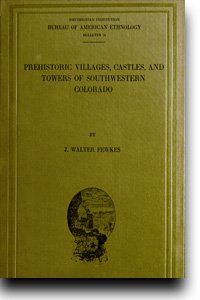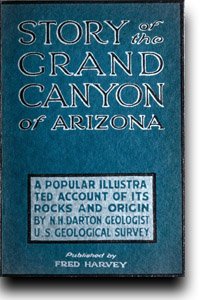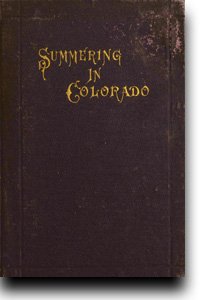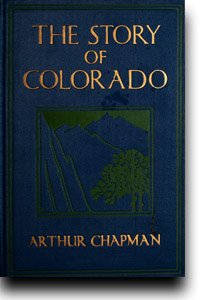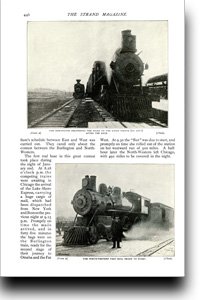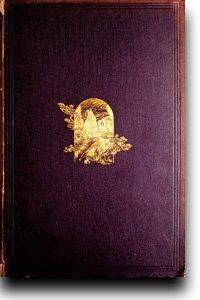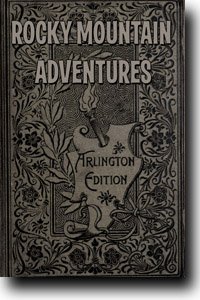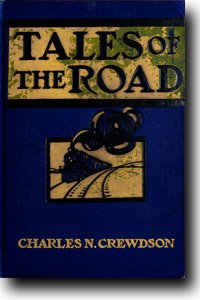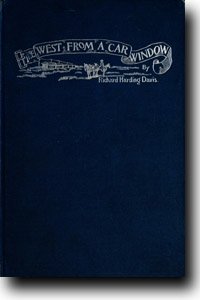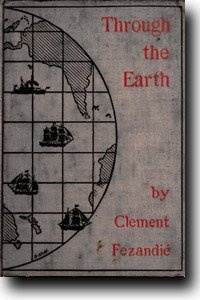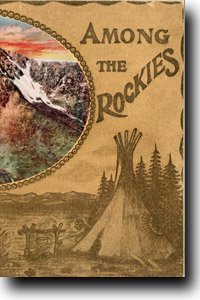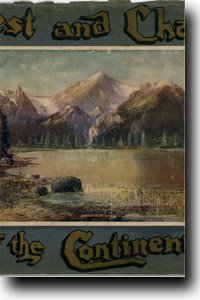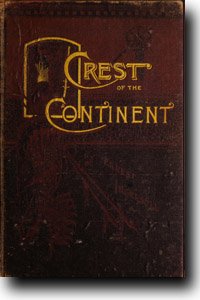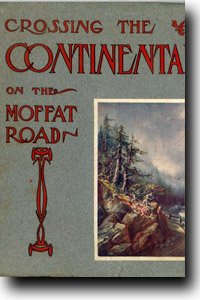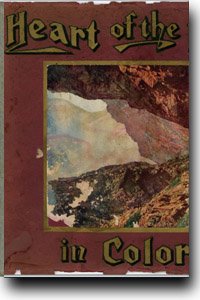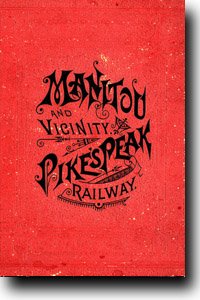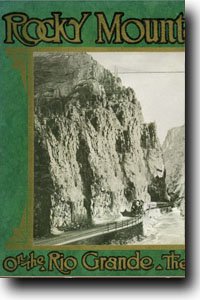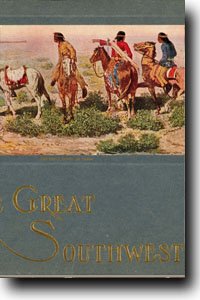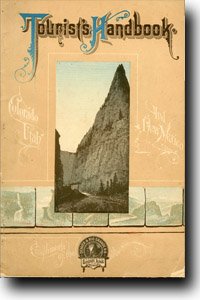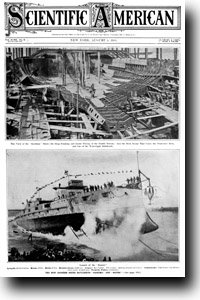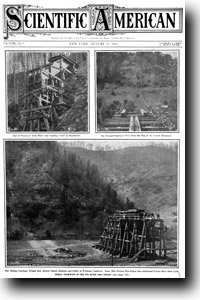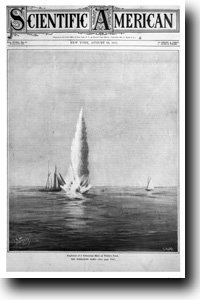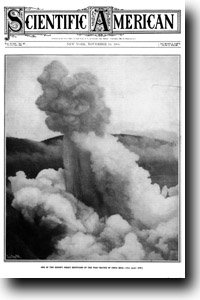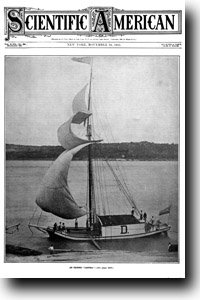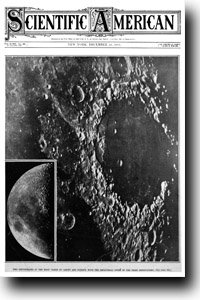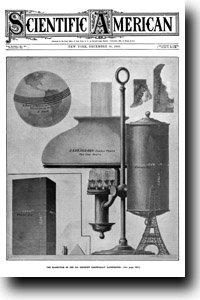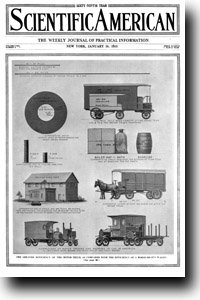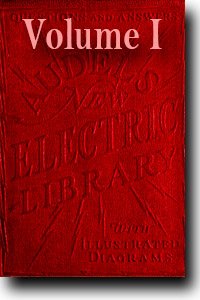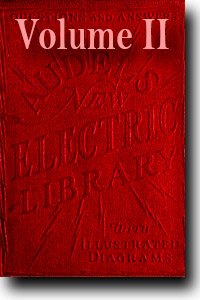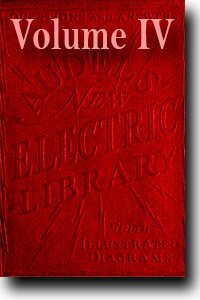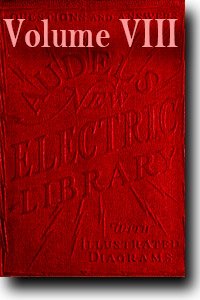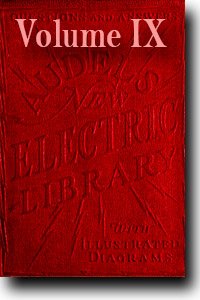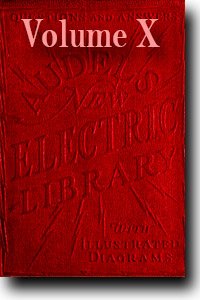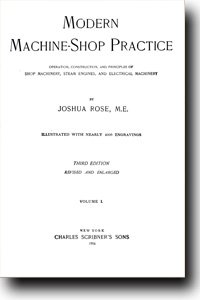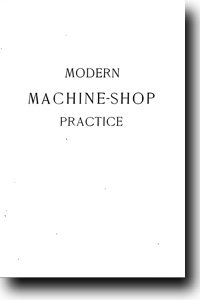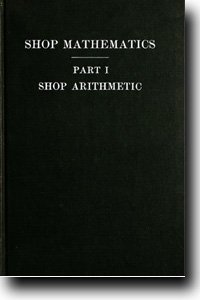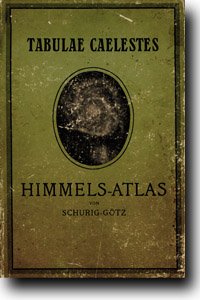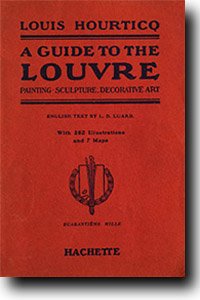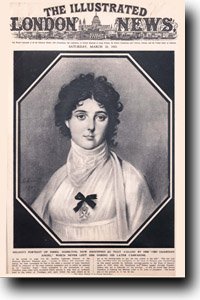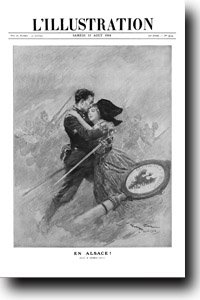The Patterson Library
Covering many areas of interest from Colorado and the Southwest, to train technology, electricity and science, these historical documents have been scanned by Craig and are presented here free of charge. These documents are in the Craig Patterson collection at the Internet Archive. Links below retrieve documents directly from the Archive. The images from the books have been scanned in high resolution, usually 1200 or 2400 dpi, but Acrobat isn’t able to support a page that large, at least not the version we use. For this reason, they’re stored at the Archive at 600 dpi. If you need the original hi-res TIFF scans, please contact Craig directly.
Within this library are several sections, to make it easier to look through descriptions. Click on the section title to go to that section:
HISTORY - Historical items of interest to Colorado residents, as well as various other items from the Southwest.
LITERATURE - Written from a historical perspective, these are stories about Colorado and its surroundings, with the exception of one science fiction story.
PHOTOGRAPHY AND IMAGES - The most famous views of railroads, and lesser-known and rare shots, along with paintings and alterations.
SCIENCE - Some issues of Scientific American from 1905 that, frankly, had some interesting articles in them. There’s no real Colorado connection here. America's preeminent science magazine of the 19th and 20th centuries, highlighting various patents, discoveries, experiments, and technological marvels.
TECHNICAL - Disciplines include machining, railroad engineering, electrical engineering, mathematics, and astronomy. Make no mistake; if one were to learn the lessons and examples in these volumes, they would know more than most currently employed in these fields.
OTHER - French and British history is shown here, so obviously there’s no Colorado connection, but these items have wonderful illustrations and informative stories.
History
America Illustrated - Williams, 1883. A fantastic collection of the greatest scenery the United States of America has to offer, at least as far as was known in 1883. Many detailed illustrations are included, often as full-page plates.
Over the Range to the Golden Gate - Wood, 1900. A detailed guidebook covering a huge area - Colorado, New Mexico, Utah, Nevada, California, Oregon, Puget Sound and The Great Northwest. The author is traveling by train and describing the routes in great detail. In Colorado/New Mexico alone, there is coverage from Alamosa to Espanola and Santa Fe, and later describes the Mancos Valley /Mesa Verde area. In addition to some photographs, there are many vividly detailed black and white engravings This book provides a very good record of what the traveler would see at the turn of the century.
Pictorial History of America - Robinson, 1865. A concise view of the (then-current) history of America, in 1878. Designed as a textbook, there is more detail in this work than in most current history books, since there wasn't as much US history at that time, and much of it had just occurred, allowing a more direct perspective.
Prehistoric Villages, Castles and Towers of Southwestern Colorado - Fewkes, 1919. A study regarding the newly-discovered ancient works in the region. While we're familiar with much of this work now, there are also items included that have since been looted, covered over, or lost, making this a valuable look at the cultural history of the region. Includes photos and drawings.
Story of the Grand Canyon - Darton, 1926. This is the ninth edition of this small book, publication date circa 1926. A brief but entertaining guide to the region's history, including drawings. Another in the Fred Harvey series.
Summering in Colorado - Richards & Co., 1874. A fun, insightful guide to the wonders of Colorado, presented as a traveler, spending time in every relevant corner of the state. You'll find everything essential to convey a comprehensive idea of the routes of summer travel in Colorado, the scenery that meets the eye at every point of note, the pleasure resorts, and the delightful experiences of mountaineering. It was the desire of the writer to group these matters together in a manner that would be at once instructive and entertaining.
The Story of Colorado - Chapman, 1924. A history of Colorado, written at the request of dozens of local organizations and compiled with the help of Rand McNally. Covers the area starting with the explorations of Coronado, and going all the way through the Industrial Revolution.
Two Railway Sensations - Broome, pp445 - 451, illus with photos, printed in double columns, salvaged from a neglected copy of The Strand Magazine, Volume XVII, #100, May, 1899. Contains two articles; the first, the January, 1899, "race" between the Chicago, Burlington, And Quincy railroad and the Chicago and North Western railroad to see who would earn the postal contract to deliver mail between Chicago, Illinois, and Omaha, Nebraska, and the second; a staged train crash near Denver, Colorado, between the Bill McKinley and the Mark Hanna. Very scarce. Many factors came together that were not according to plan, but you, dear reader, must finish the article to know all about them.
USGS Annual Report - 1880-1881 - Powell, et. al. Classic text prepared by John Wesley Powell, documenting his trip through the Grand Canyon and the surrounding areas. Packed with incredible pen and ink drawings (etchings), calculations, tables, and data on minerology and geologic strata. Also contains a wealth of information on the geology surrounding Leadville, Colorado. Truly an unparalleled work, and the Craig Patterson Collection is proud to present it here. The scans took a week to prepare properly, and all figures and drawings were scanned at 1200 dpi to allow for enlargement.
Literature (Back to top)
Rocky Mountain Adventures - Bryant, 1889. “Fearful fights of American hunters with savage Indians, Mexican rancheros, and beasts of prey. Giving truthful accounts of the awful fate of hundreds of overland emigrants amid the snowdrifts of the Truckee Peaks, from whence half-frozen men, women and children were carried over slippery cliffs, lashed to the backs of their gallant rescuers.” So reads the original tag line for the book. A little fiction and a little nonfiction, this book tells terrifying tales of wonder while exploring the entire Rocky Mountain West.
Rocky Mountain Life - Sage, 1880. Somewhat in the same vein as Rocky Mountain Adventures above, this book is told as an actual happening of an explorer on their route through the Rockies. How much of it is fact is not known, though it's conceivable that much of it is.
Tales of the Road - Crewdson, 1905. The life stories and tips of the traveling salesman, filled with stories of happenings throughout the travels of the author. More interesting than it sounds!
The West from a Car Window - Davis, 1892. Adventures all the way from San Antonio to Colorado, as told by an East Coast resident. The "Car" in this case is a train car, as the automobile hadn't yet been accepted quite so universally.
Through the Earth - Fezandie, 1898. Groundbreaking science fiction book printed as a collection of four previously-printed short stories in magazine form. Concerns a transportation tube through the planet from New York to Australia, which gives its first passenger an experience in free fall but suffers from melting at the Earth's core and must be abandoned. Has been influential with regard to many works to come later, though it is an under-appreciated gem in its own right.
Photography and Images (Back to top)
Among the Rockies - Tammen, 1907. A collection of photographs, with brief explanations, detailing the scenery in Colorado. Harry Heye Tammen was born in Baltimore, Maryland in 1856. He moved to Denver in 1880 and started the H. H. Tammen & Co. (also known as the H. H. Tammen Curio Co.) with his business partner, Charles A. Stuart. The firm sold mail-order souvenir items, including pottery, rugs, mineral specimens, and many other objects from Colorado, and published catalogs advertising their goods. The company also sold colorized prints and postcards shot by different photographers, and became Colorado's largest postcard publisher. In 1895, Tammen and Frederick G. Bonfils became co-owners of the Denver Post.
Around the Circle - D&RGRR, 1901. Full title is Around the Circle, a Thousand Miles Through the Rocky Mountains. A 60-page booklet distributed free of charge by the Denver and Rio Grande Railroad to anyone who asked for it. Filled with wonderful photos and text, descriptive of various attractions, both man-made and natural, throughout Colorado. Scanned in very high resolution.
Crest and Chasm of the Continent - Crisp, 1905. 24 color engravings (7.75" x 6") of superlatives sites of the Scenic Wonders of Colorado, plus one on the cover. Scanned in very high resolution. "From the time when God, in creating the world, caused the mighty Rockies to rear their towering peaks skyward, down to the present, they, with their awful chasms present an ever-changing view, appearing differently on every occasion, yet never failing in inspiring one with a feeling of awe and a sense of his own insignificance." (Intro).
Crest of the Continent - Ingersoll, 1885. Fascinating glimpse into the Rockies in the 1880s with dozens of full-page and smaller views of Denver and the surrounding mountains and canyons, springs, etc. of the Colorado Rockies, with further excursions into New Mexico, the San Juan and Rio Grande Rivers, the Arkansas Valley, Villa Grove, Lake City, Black Canyon and Salt Lake City. Ernest Ingersoll, famous 19th century travel writer, set out to explore Colorado in the 1880s because "it was wild and rough" and caused "exhilaration of the body and soul." The result of his captivation by this American frontier was this 1885 work, Crest of the Continent - A Summer's Ramble in the Rocky Mountains and Beyond. As a member of the 1874 Hayden Expedition, Ingersoll became enthralled with this special land. And, although he wrote about mining, ranching, agriculture, and other commerce of the time, his descriptive style was a perfect match for the "high Rockies" and Colorado's awesome scenery, restful health resorts, and what is now Northern New Mexico and eastern Utah. In Crest of the Continent, Ingersoll brings the "Colorado experience" to life, perhaps better than anyone else before or since, with words and illustrations that record for all time what it was like to live in the Wild (and majestically wonderful) West. Today's tourist and historian will find this a very enjoyable book; one that will be read and referred to often.
Crossing the Continental Divide - Haffner, 1905. Views after paintings by Charles H. Harmon are very good, and display an interesting mix from Colorado and Utah. For some reason, some booksellers think this includes California. It does not, and it shouldn't! David H. Moffat was president of a large Denver bank and promoter of a direct Denver to Salt Lake line, which would later become the famous Moffat Line. The route this line took was known as The Moffat Road, and went directly over the Continental Divide at some of the most spectacular scenery in Colorado, much of which was so remote it had never before been seen by the public.
Gems of Colorado Scenery - Tammen, 1905. A selection of 35 black and white photographs of various Colorado scenic landmarks, published by the H.H. Tammen Company in Denver. Some of these have appeared in other texts, some are new, but all are classic views of the Centennial State. The document as a whole has been scanned at 1200 DPI, then downconverted for this posting.
Heart of the Rockies in Colorado - Crisp, 1906. From the Williamson-Haffner Engraving Company in Denver, this book was published for the Denver & Rio Grande railroad, for sale onboard its trains to tourists. It features pictures of Colorado in full color, though they have been colorized by hand as part of the printing process. Some are new for this book, some have been used many times throughout years prior, and some are from paintings by various luminaries, but all are classic views. This book was scanned at 1200 dpi for great enlargements, but put together in the PDF at lower resolution.
Manitou - Hooper, 1885. A souvenir book published by the Denver and Rio Grande Railroad, and sent out free of charge to anyone who asked for it. Filled with wonderful full-page plates and interesting information, this book is a great primer for information on the sights along the D&RG line.
Manitou and Vicinity - Pikes Peak Railway - This book has no copyright date, and is usually presumed to have been published in 1880. But the railway wasn't in existence until 1891, and since it's referred to specifically in the title, it's now difficult to ascertain the exact publishing date. 12 glossy lithographed plates, with multiple images, folded accordion-style. This volume has lithographs of Manitou, Soda Spring and Cliff House, Iron Springs and hotel, Siamese twins, Garden of the Gods, Cathedral Spires, Pikes Peak Avenue, Springshell-Gate, Pike's Peak RY, etc. 12 pages. These are human-enhanced photographs, giving an extremely unique look. Scanned at 2400 dpi to allow for tremendous enlargements, though Acrobat will not allow such a high resolution.
Natures Romance Over the Loop - Hynes, 1902. An intriguing souvenir book provided by The Colorado News Company, and sold to passengers through Clear Creek Canyon, riding what came to be called The Loop. As such, there are several pictures of The Loop itself, from varying angles, as well as photographs of various other portions of the railway, which was converted to passenger use once the silver market crashed. All early and unretouched photography - no paintings, thus each image is in black and white.
Rocky Mountain Views of the Rio Grande, Scenic Line of the World II - D&RGWRR, 1910. Printed for the exclusive use of the railroad for sale to tourists, this 1910 version has black and white images, unfettered by any color process. The images are different from the 1917 version below. Scanned at 1200 dpi, but Acrobat seems unable to handle that resolution.
Rocky Mountain Views of the Rio Grande, the Scenic Line of the World I - D&RGR, 1910. Printed by Smith-Brooks Printing, and distributed exclusively by the railroad, this book has 23 photographs within it, hand-colored from photographs. There has also been some manipulation of the photos to add trains, though not in every case. Scanned at 1200 dpi, though that size would not fit into the PDF.
Scenic Gems of the The Pikes Peak Region - Tammen, 1917. Another in a series of books published by Tammen to sell to tourists coming through the region. This one, like most others, is in full color by virtue of having black and white photos hand-painted to look their best. Many of these views were covered in other publications and collected for this publication, but some are also new.
The Great Southwest Along the Santa Fe - Harvey, 1919. A Fred Harvey publication, showing the various sites along the Santa Fe Trail. Filled with great color paintings of people, places, and scenery not found in other publications.
The Loop and Clear Creek Canon - Unknown, ca. 1900. An extremely rare folio of pictures of The Loop, Clear Creek Canyon features, and Georgetown and surrounds. Once the silver crash destroyed miming in the area, the railroad switched over to tourism, and this collection was sold to tourists. These are photographs, enhanced with pen and ink, to make them clearer. Scanned at 1200 dpi, though they cannot be rendered by Acrobat.
Tourists Handbook of Colorado - D&RGR, 1895. One of many publications of the Denver & Rio Grande Railroad, this book is filled with pictures, to attract interest initially, and then gives descriptions of many regions and attractions of all three states. Tremendously informative.
Science (Back to Top)
Scientific American 19050708 - July 8, 1905, showing the various sizes of the world's warships on the cover. Stories include Pittsburgh canal, safety on the sea, electric railways, feathered flying machines, telegraphs, Chaldean remains, the Leapfrog Railway, and folding canoes.
Scientific American 19050715 - July 15, 1905, showing the Egyptian statues of Ramses II on the cover. Stories include Panama canal, Pear and the North Pole, effects of Radium, NYC subway extension, Navy wireless school, tallest chimney, a new aeroplane, and the Temple of Abu Simbel.
Scientific American 19050805 - August 5, 1905, showing the launch of the Japanese battleship Katori on the cover. Stories include mechanical stokers on locomotives, Seawanhaka cup's return to America, car wheel wear on curves, protection against fire damp, Yellow Fever prevention, Babylonian drains, Ohio canal improvement, hollow concrete building blocks, ice making, and fires from motion pictures exhibitions.
Scientific American 19050812 - August 12, 1905, showing an aerial drawing of Niagara Falls on the cover. Stories include electric power at Niagara, cause of accidents to submarines, blood corpuscles on Mont Blank, photographing the solar corona, a prize for a non-poisonous diamond cutter, the astrolabe of Regiomontanus, production of hydrogen and oxygen for welding, safety buffer for automobiles, and electricity in Egypt.
Scientific American 19050819 - August 19, 1905, showing aerial tramways in the Tug River Coal Fields on the cover. Stories include failure of the Isham shell, rescue of the Fiala-Ziegler expedition, bids for the Manhattan bridge, electric locomotives for the New York Central, bombs for hail in Switzerland, inventions of ancient Rome, hydraulic mining with centrifugal pumps, and the statue of the Sumerian King David.
Scientific American 19050826 - August 26, 1905, showing the explosion of a submarine mine at Willet's Point on the cover. Stories include an old problem in New York, Russian army hydrogen balloons, the Government's new coal testing plant, power sites about Niagara Falls, procession of the giants, determining the speed of a photographic shutter, and American gasoline railway motor cars.
Scientific American 19051111 - November 11, 1905, showing the coke conveyor at Clichy Gas Works on the cover. Stories include an American floating exposition, sanitation of the Panama Canal zone, colloids, suspensions, and related phenomena, the Scientific American Boy, curious uses of American woods, 400-hp racing boat, microphotography, uniformity of organic and inorganic bodies, and Spanish olives.
Scientific American 19051118 - November 18, 1905, showing the Costa Rica's Poas Crater on the cover. Stories include the contract to build the Panama Canal, high velocities and gun erosion, the Suez Canal explosion, electrical value of wind power, North Pole balloon expedition, the prevention of colds, the visiting British fleet, the Long Islan Railroad electrified, and motor cars in Hungary.
Scientific American 19051125 - November 25, 1905, showing the orinoco "Lancha" on the cover. Stories include turbine troubles, Robert Whitehead and the torpedo, modern preservation of railroad ties, fun with the phonograph, Frederic H. Betts obituary, an automatic cartridge counter for magazine rifles, and a storage-battery locomotive.
Scientific American 19051209 - December 9, 1905, showing flax cultivation for textile manufacturing on the cover. Stories include guard rails in the subway, an all-day race between battleships, the growth of our railroad system, the heavens in December, the mysteries of the ocean bed, the bacterial purification of sewage, and the new gasoline motored train car.
Scientific American 19051223 - December 23, 1905, showing closeup photographs of the moon's craters, taken by Loewy and Puiseux on the cover. Stories include the latest success of the marine turbine, the quest of the northwest passage, the electrical show at The Garden, the death of Edward Atkinson, official trials of the battleship Rhode Island, and the new Philadelphia subway.
Scientific American 19051230 - December 30, 1905, graphically showing the magnitude of the oil industry on the cover. Stories include sanitary and scientific, car brakes and steel dust, the reorganization of the British navy, the heavens in January, Calvin Milton Woodward obituary, new electric capstan and Antwerp, a pepper within a pepper, a rapid photographic printing apparatus, insects found in amber, and the magnitude of the oil industry.
Scientific American 19130118 - January 18, 1913, graphically showing the efficiency of the horse-drawn wagon, compared with that of a truck, on the cover. Stories include comparing the incomparable, in defense of brain property, the block signal and control board, moving and talking pictures, a successful automatic train stop, teams and motor trucks compared, the death of Dr. Lewis Swift, Blackening tan leather, and a new industrial process for manufacturing oxygen.
Technical (Back to Top)
Audels Electric Library - A phenomenal reference set from 1929, meant for those learning how to be electricians. Filled with, literally, thousands of diagrams, exploded views, charts and graphs, in addition to the detailed text. Also contains tests on every chapter. The passage of time has not lessened the importance of this set - knowing everything in these books will prepare one quite well for the task of being an electrician.
Volume 1 - Fundamental Principles and Rules of Electricity - Magnetism - Armature Winding - Repairs.
Volume 2 - Dynamos, DC Motors, Contruction, Installation, Maintenance and Troubleshooting.
Volume 3 - Electrical testing instruments and tests, storage battery construction and repairs.
Volume 4 - Alternating Current Principles and Diagrams, Power Factor Alternators, Transformers.
Volume 7 - Wiring; House, Light and Power Circuits, High Tension Transmission Plans, Calculations, Code.
Volume 8 - Electric Railways and Signals, Elevators, Hoists and Cranes; Gas Engine (Auto and Aero), Ignition, Starters.
Volume 9 - Radio, Telephone, Telegraph; Bells; Signals; Motion Picture Talkies; Lighting; Illumination.
Volume 10 - Electric Refrigeration, Heating, X-ray; Plating, Welding; Pumps; Compressors; Domestic Farm Appliances.
Uranography - Kendall, 1844. Full title is Uranography; or, A Description of the Heavens; Designed for Academics and Schools; Accompanied by An Atlas of the Heavens, Showing the Places of the Principal Stars, Clusters, and Nebulæ.
Pretty descriptive all on its own. Uranography is the study and construction of maps related to the heavens. Today we would call it Celestial Cartography. Written and researched by E. Otis Kendall, who would later become professor of mathematics and astronomy at the University of Pennsylvania, and in 1883 would become vice-provost and dean of the college faculty.
A series of plates accompanies this volume, and is included in this collection. It's surprising how much information was already known and fully calculated about our solar system in 1846, and indeed, much of this same information had been known for a hundred years prior. This is a quite complete and valuable study guide for all planets and their movement, and is highly recommended.
Enhanced Atlas for Uranography - Kendall, 1844. Charts and additional information meant to accompany the above book, Uranography. This document has been repaired and enhanced by Craig Patterson, and re-upped here. The original document is from the University of California collection, but is not as useful as this version.
Modern Machine Shop Practice Volume 1 - Rose, 1916. The first of two volumes showing every facet of machine shops of the day, from machinery, through methods and theories, to correct practice. Not only an invaluable tool at the time, studying these volumes will give any reader a thorough view of how to run a machine shop, even today. Filled with literally thousands of exploded views, diagrams, drawings, and photographs of every conceivable facet of machine shop operation.
Modern Machine Shop Practice Volume 2 - Rose, 1916. The second of two volumes showing every facet of machine shops of the day, from machinery, through methods and theories, to correct practice. Not only an invaluable tool at the time, studying these volumes will give any reader a thorough view of how to run a machine shop, even today. Filled with literally thousands of exploded views, diagrams, drawings, and photographs of every conceivable facet of machine shop operation.
Shop Mathematics - Norris and Smith, 1931. This is part 1 of the series, covering Shop Arithmetic. An invaluable addition to any shop, even if it did come out in 1931.
Tabulae Caelestes - Shurig, 1925. Richard Shurig's Himmels-Atlas of the heavens, with star charts for both hemispheres. Recreated for 1925 with new, clearer drawings of the stars and improved lettering. The star locations have been drawn in reference to the equinox of 1925, and star magnitudes are taken from the Potsdam Durchmusterung and the Harvard southern zones. There is also a complete index of all constellations, usable even if one does not speak German.
Also included is a table showing annual precession in right ascension.
Side Card Notes (translated):
I. Left: The one that can be seen very well with the naked eye bare nebulae in Andromeda, near v, after several hours of photography. Admission; 21/, degrees long, 1 degree wide in the middle. Right: The Spiral Nebula in Hounds after several hours of photographic exposure.
II. Left: With the naked eye one notices un immediately next to the middle tail star Mizar of the Great Bear a small star of 5th magnitude Alkor (little horseman), which is 11 minutes of arc away from that. Larger telescopes show us Mizar as a double star. The two 141/2 arc seconds apart distant components are 2nd and 4th size. Right: The Pleiades or the Seven Stars - the star cluster in Taurus, which is already noticeable to the naked eye. The normal eye usually only sees 6 stars, but a sharper eye can also the somewhat fainter star Merope. Tab.
VII. Left: The one visible to the naked eye Star Cluster in Toucan, 1/4 degree diam. Right: The Great Orion Nebula south of the Belt of Orion between the stars i and c. the 4 stars in the densest part form the "trapezium".
VIII. Left: The planetary nebula in the Hyder, south from & right: The star seen by the naked eye 41st to 5th magnitude visible star cluster o in Centaur, called "by far the richest and largest star cluster in the sky" by J. Herschel. The Railway Engineer - Annual compilation of the monthly magazine
The Railway Engineer - Various, 1928. This is without a doubt the most incredible collection of railroad data, photographs, pictures, drawings, and reporting that has ever been seen, and 1928 was in the Golden Age of railroading, so this Annual is jam-packed with all of the above. Information on new patents, photographs of railroading from around the world, and a tremendous amount of info on the reorganization of Crewe Locomotive Works are all represented here, as well as accident reports. A tremendous historical resource.
Other (Back to Top)
A Guide to the Louvre - Luard, 1923. This guide is a wonderful companion to a visit, but can also be studied on its own. English text is by L. D. Luard. Includes a map of the facility, sample images from many galleries, and descriptions and importance of many works. Of course, not all can be covered, but reading this guide will give you a much more detailed overview of art history than most people have.
Illustrated London News 19391028 - The Illustrated London News first appeared in 1842, as the world's first illustrated weekly news magazine. This issue is from October 28, 1939, and begins to show World War II, with the cover depicting a haunting image of troops marching in front of Big Ben.
Illustrated London News 19420606 - June 6, 1942, showing the war in full swing, with front page illustrations showing maneuvers in the Libyan desert.
Illustrated London News 19430320 - March 20, 1943, showing the war in full swing, with maps, and photos of instruments of war in use and in ruin.
L'Illustration Magazine 19140815 - L'Illustration was a weekly French newspaper published in Paris from 1843 to 1944. This issue is from August 15, 1914, and details the then-current state of World War I.

